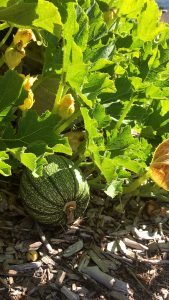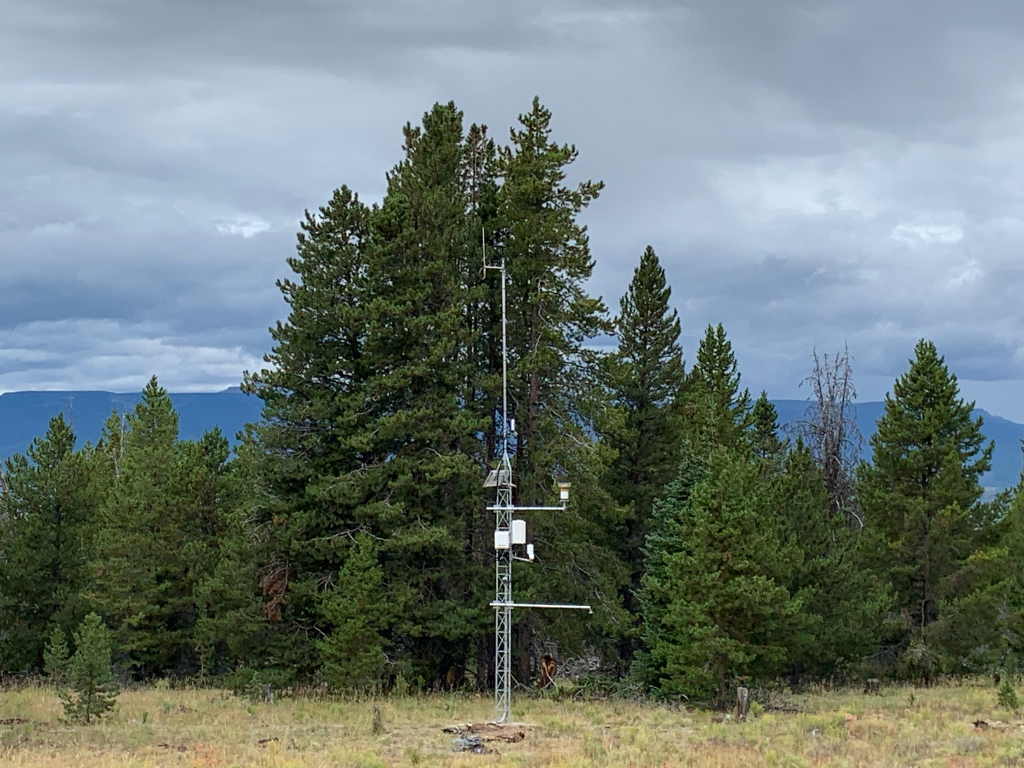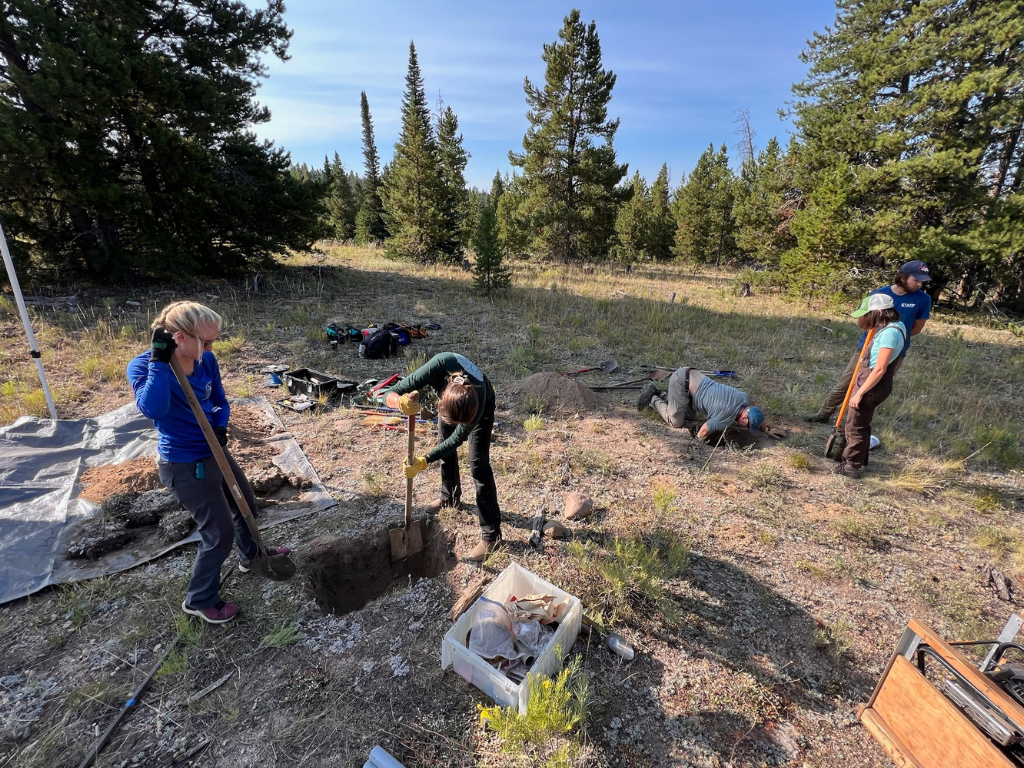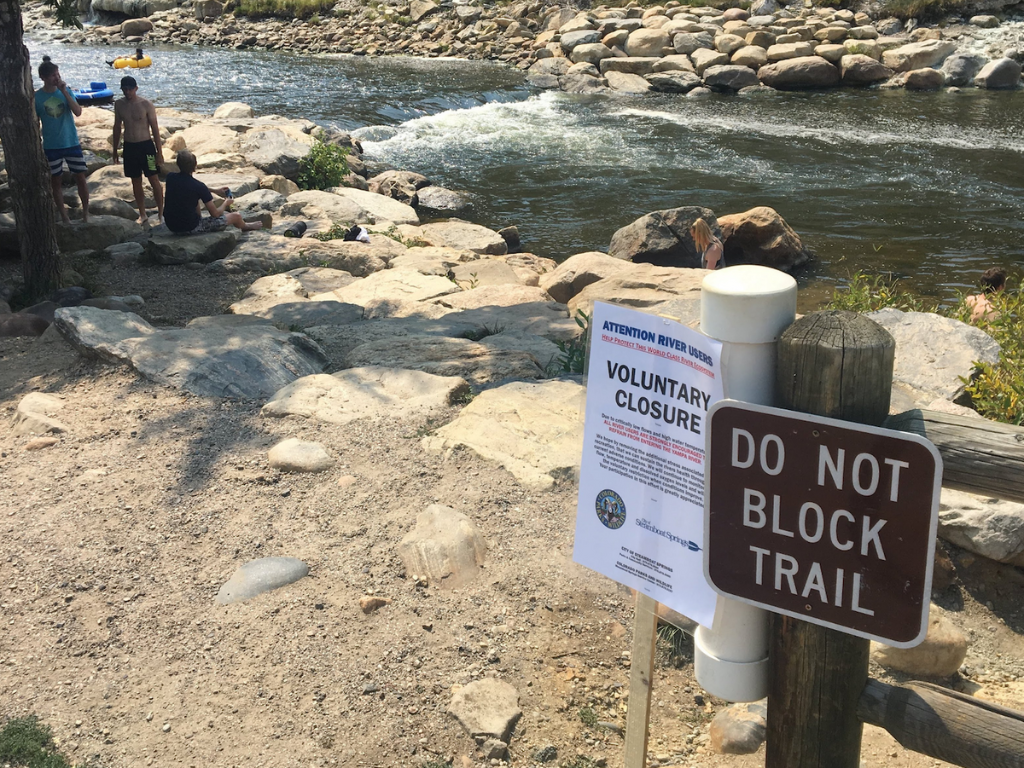Kate Brocato, Communications and Program Manager | April 14, 2021
As seen in Steamboat Neighbors Magazine.
It’s April, and spring is just around the corner. While there will surely be a few more below-freezing days, we are all itching to dust off the tools and get back into the garden again. But, before you get started, there are a few steps we can all take to transform our gardens into areas of resilience in the face of climate change as we continue to see impacts locally.
Support our pollinators
In recent years, the numbers of pollinators – native bees, honey bees, birds, bats, butterflies, etc. – have seen steep declines. This is caused by a number of factors from habitat loss and pesticide  use to invasive species and climate change impacts. Pollinators are an essential piece of our food system, fueling pollination for fruits, seed production for vegetables, and even pollinating feed for the livestock industry, so it has become essential that we protect and support these species. We can do this at home in a number of ways:
use to invasive species and climate change impacts. Pollinators are an essential piece of our food system, fueling pollination for fruits, seed production for vegetables, and even pollinating feed for the livestock industry, so it has become essential that we protect and support these species. We can do this at home in a number of ways:
Try incorporating native plants into your garden. Native plants can supply essential nutrients to pollinators, which they may not be receiving from non-native species, and planting native species can restore habitat that many pollinators rely on. A few species that are native to our area include columbines, lupine, penstemon, black eyed susan, and goldenrod. Bees are drawn to flowers that are blue, purple, white, and yellow. We can also attract pollinators by avoiding pesticides, leaving piles of leaves and fallen logs for nesting sites, and providing clean water.
Conserve water
As of April 8, 2021, Routt and Moffat counties were still in extreme and exceptional drought, according to the U.S. Drought Monitor, perpetuating from the hottest and driest summer on record last year. Lawns and landscaping can account for a huge portion of water usage during the summer months, but as water variability increases, it is important that we minimize water usage and make the water we do use go further.
Native plants can help greatly in this area as well. Many of Colorado’s native plants are adapted to dryer, hotter conditions. Consider slowly replacing ornamental species or areas of lawn with native species to reduce water-use for irrigation. When you do need to irrigate, try to do so in the morning or evening to lessen the amount of water that is evaporated.
Lastly, make sure to leave no area of your garden or landscaping uncovered. Mulching is a great way to slow the spread of water, sink it into the ground, and reduce evaporation. Untreated wood chips, leaves, straw, and grass clippings can all be used as mulch, which will both add to the organic matter in your soil and conserve water.
Food production
There are few things that are quite as enjoyable as the taste of fresh fruits and vegetables during the summer, especially those that come from your own garden. However, growing food in our high altitude environment presents its own set of challenges.
However, there are a number of fruits and vegetables that don’t mind what our climate has to offer. Greens, like lettuce, spinach, and kale, are great to get started earlier in the season as they can withstand the cooler temperatures. Yampa actually used to be a huge area of production for head lettuce! Snow peas are particularly prolific, and you will be surprised at just how long you will be able to enjoy them throughout the season. Root crops – potatoes, carrots, beets, turnips – also do well because they are rarely affected by temperatures above ground.
For those crops that like warmer weather or to help protect the garden from frosts, amendments can be made, such as the use of row covers, cold frames, and greenhouses, all of which take advantage of that great Colorado sunshine we all love.
Let’s get started!
While we are only just starting to see a hint of the warmer days ahead, this is a great time to prep the garden, start your seeds, and to learn more about how your garden can not only be a place of enjoyment for yourself but also an adaptive landscape that supports biodiversity.






